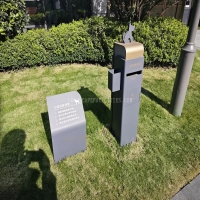Welcome to the website for landscape facilities products and knowledge.
What are the options for integrating personal or team problem-solving tools into the table?
In today's fast-paced work environments, effectively integrating problem-solving tools into our daily tables—both literal and metaphorical—has become crucial for personal and team success. The options for incorporating these tools are diverse and adaptable to various working styles and organizational needs.
For individual practitioners, digital note-taking applications like Notion or Obsidian provide flexible canvases to create personalized problem-solving tables. These platforms allow users to design custom templates incorporating methodologies such as the Eisenhower Matrix for priority management or SWOT analysis for strategic planning. The key advantage lies in the ability to visually organize information while maintaining easy access across devices.
Teams have even more sophisticated options at their disposal. Collaborative platforms like Miro or Mural offer virtual whiteboards where multiple team members can simultaneously contribute to problem-solving frameworks. These tools support real-time brainstorming sessions, affinity diagramming, and root cause analysis through intuitive drag-and-drop interfaces. Many organizations are now embedding structured problem-solving templates directly into their project management software, ensuring these methodologies become an organic part of the workflow rather than separate exercises.
The integration process typically follows three approaches: standalone dedicated tools that focus specifically on problem-solving methodologies, plugin integrations that add problem-solving capabilities to existing software, and custom-built solutions tailored to an organization's unique requirements. Each approach has distinct advantages—dedicated tools often provide more sophisticated features, while integrations promote higher adoption by residing within familiar ecosystems.
Successful implementation depends on several factors: choosing tools that match your team's technical proficiency, ensuring mobile accessibility for remote members, and establishing clear protocols for how and when to use these problem-solving tables. Many teams find that starting with simple templates and gradually introducing more complex frameworks yields better long-term adoption than attempting comprehensive overhauls.
The most effective integrations often combine digital efficiency with human-centered design. Tools that provide visual clarity while accommodating different thinking styles tend to deliver the best results. Whether working individually or collaboratively, the ultimate goal remains the same: transforming abstract problem-solving methodologies into practical, accessible tools that drive better decisions and more innovative solutions.
As workplace challenges grow increasingly complex, the strategic integration of these tools into our daily tables—whether physical desks, digital dashboards, or virtual collaboration spaces—will continue to distinguish high-performing individuals and teams from their counterparts. The optimal solution varies by context, but the common thread remains the seamless marriage of methodology and practical implementation.
Related search:

Recommendation
Outdoor cat and dog feces trash can; Community pet trash can; Metal multi-color design